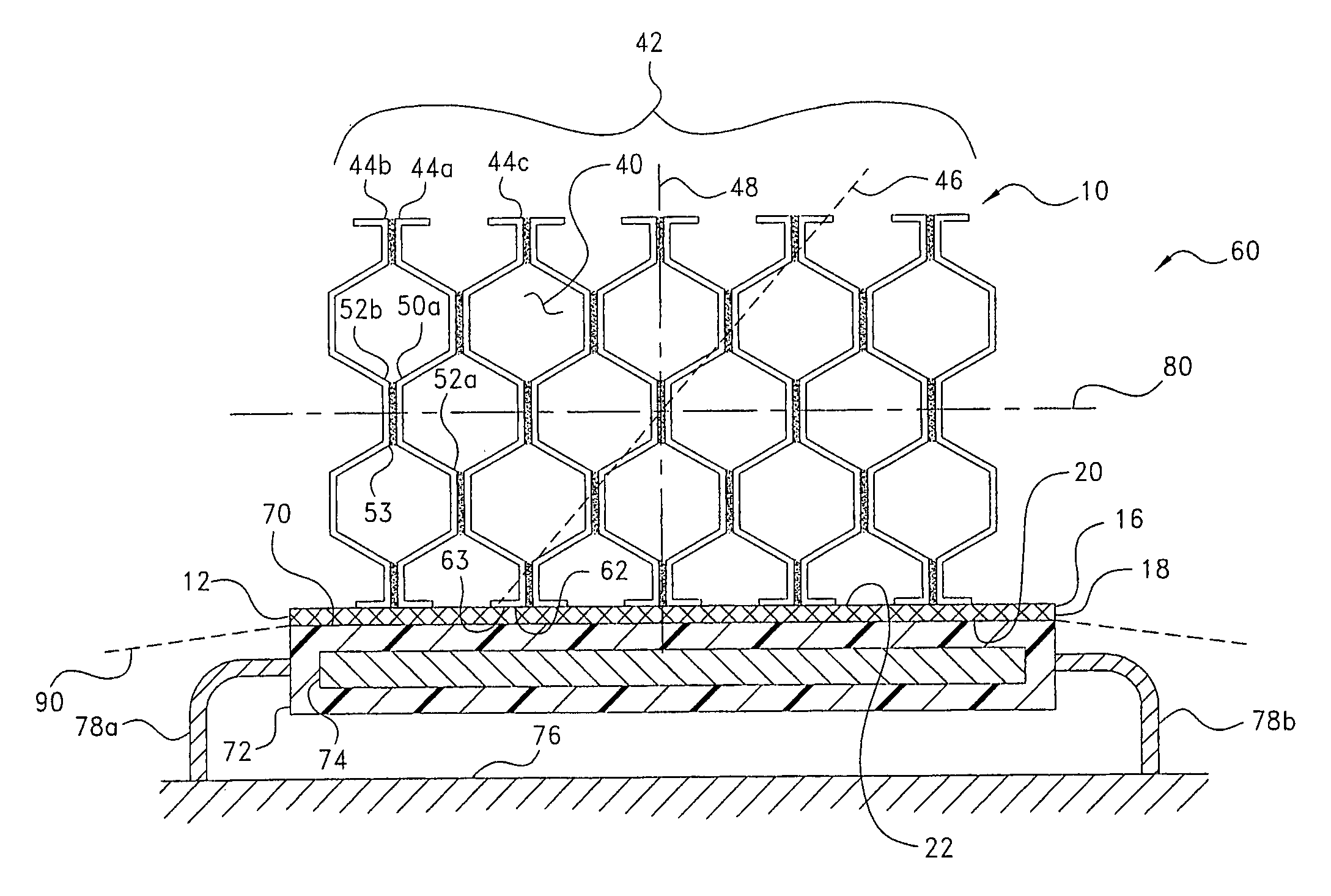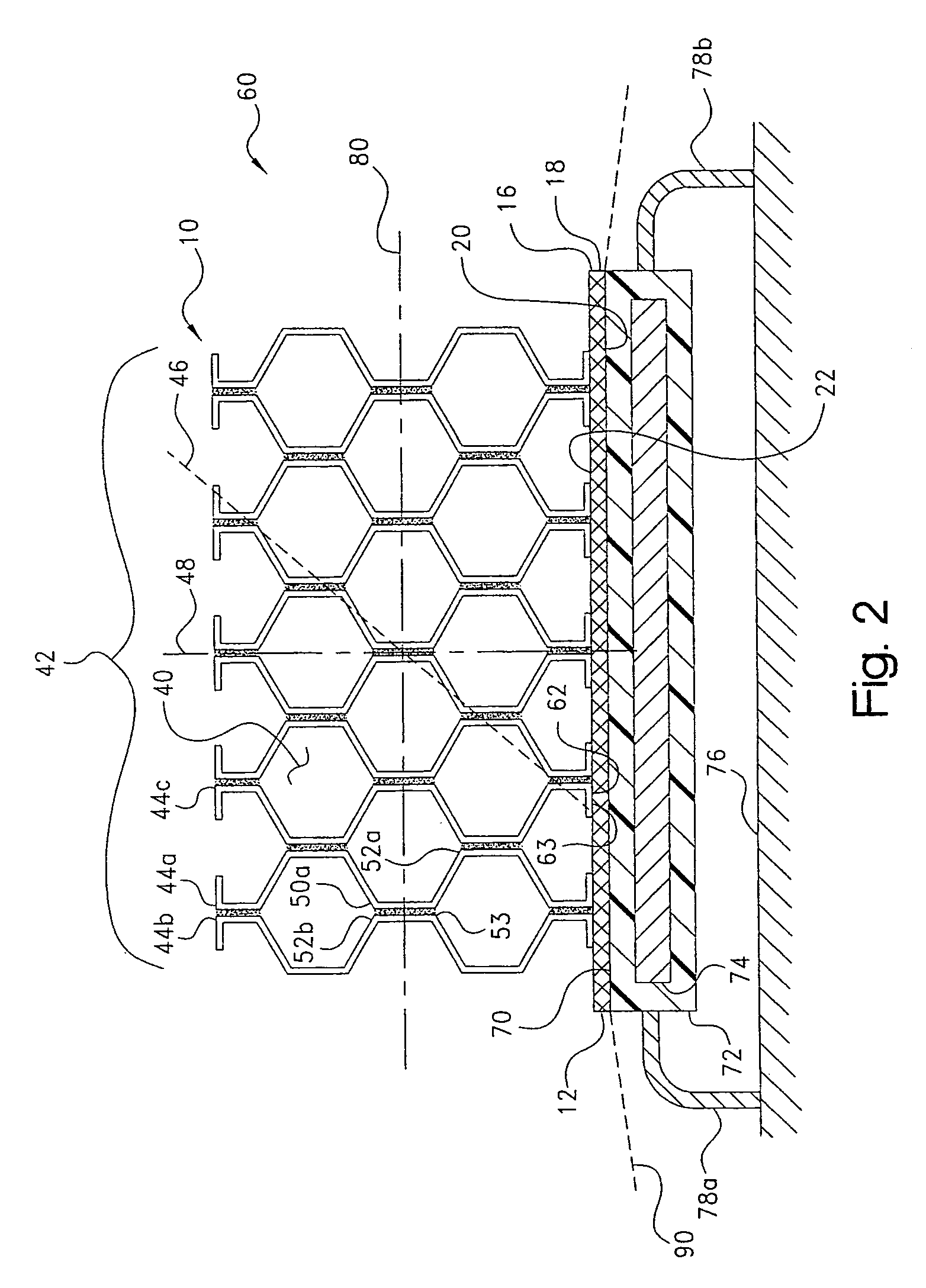Lightweight heat sink
a heat sink and light-weight technology, applied in the direction of lighting and heating apparatus, semiconductor/solid-state device details, computerized elements, etc., can solve the problems of increasing complexity of circuit design, increasing the size of the device, and increasing the complexity of the design
- Summary
- Abstract
- Description
- Claims
- Application Information
AI Technical Summary
Benefits of technology
Problems solved by technology
Method used
Image
Examples
example
[0044]A representative heat sink according to the present invention was constructed for characterization. The sample was prepared by cutting a 0.66 inch (1.7 cm) thick sheet of aluminum foil honeycomb into a 1×1 inch (2.5×2.5 cm) square. An 11 mil (0.28 mm) thick layer of an doubled-sided thermal tape (Thermattach™ T411, silicone PSA supported on an expanded aluminum mesh, thermal impedance @2 / W (6.5° C.-cm2 / W), Parker Chomerics Division, Woburn, Mass.) was applied to one side of the square. The heat sink sample so constructed weighed about 1.9 g.
[0045]The heat sink sample was surface mounted under a hand-applied pressure to a TO-220 power supply run at 6 watts. The assembly were centered within a wind tunnel operated at 100 linear feet per minute (LFM) with the honeycomb openings in the heat sink aligned in the direction of air flow. At steady-state, typically after about 35 minutes, the case temperature of the power supply was recorded.
[0046]The experimental results, wherein all t...
PUM
 Login to View More
Login to View More Abstract
Description
Claims
Application Information
 Login to View More
Login to View More - R&D
- Intellectual Property
- Life Sciences
- Materials
- Tech Scout
- Unparalleled Data Quality
- Higher Quality Content
- 60% Fewer Hallucinations
Browse by: Latest US Patents, China's latest patents, Technical Efficacy Thesaurus, Application Domain, Technology Topic, Popular Technical Reports.
© 2025 PatSnap. All rights reserved.Legal|Privacy policy|Modern Slavery Act Transparency Statement|Sitemap|About US| Contact US: help@patsnap.com



